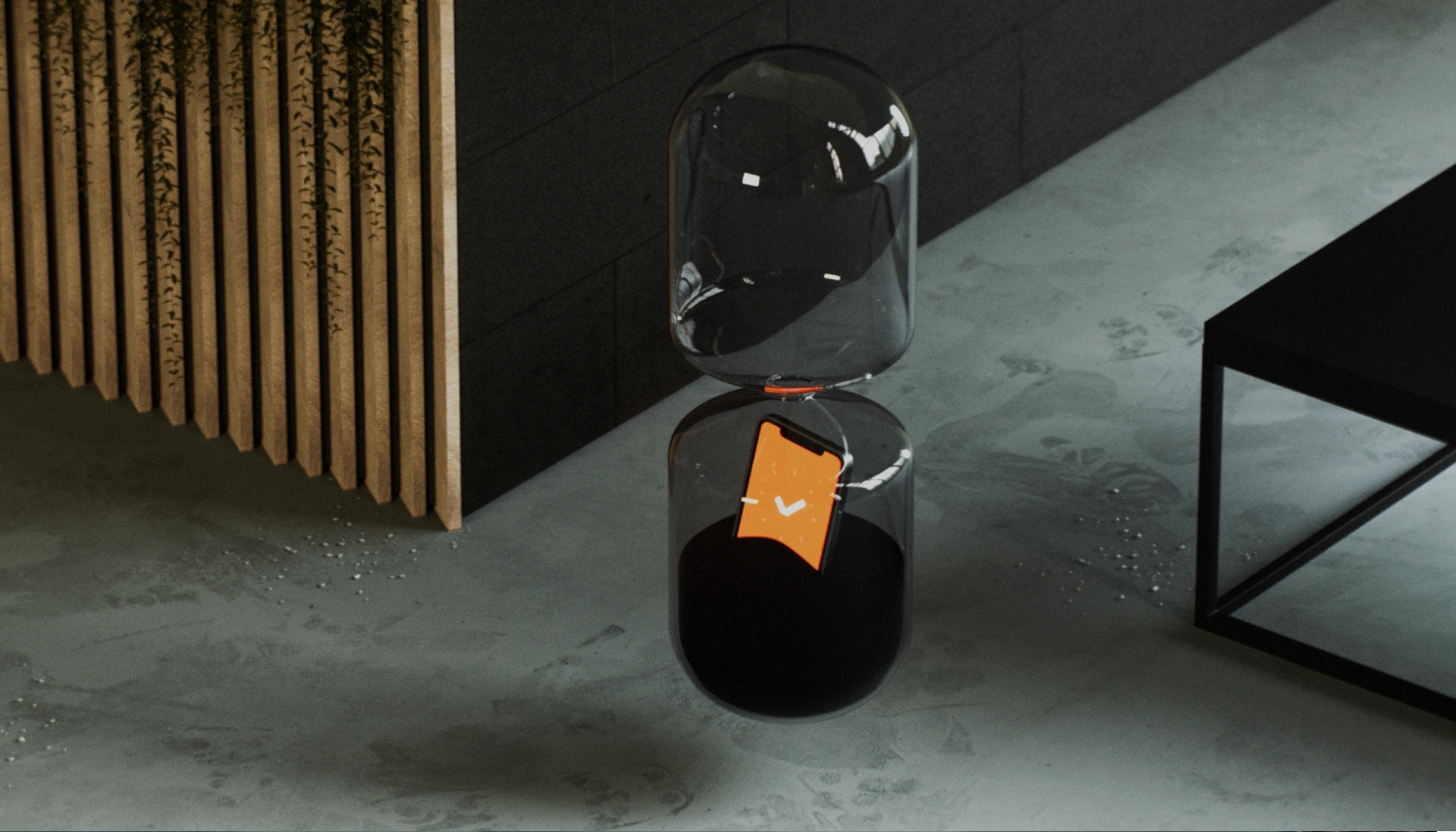iOS & Apple
Apple unifies numbering systems: Skips to iOS 26. Apple announced change in naming operating systems — instead of iOS 19, we will see iOS 26 this year. The goal is to unify numbering across platforms and simplify orientation for both developers and users.
iOS 18.5 fixes a serious security flaw. In late May, Apple released the iOS 18.5 update, which Resolves a critical vulnerability associated with image processing. It is recommended to update as soon as possible — the error may have allowed access to private data.
Accessibiliteiten
- Accessibility labels in the App Store. The App Store will introduce new “accessibility labels” that will inform app pages about supported features such as VoiceOver, Voice Control, larger text, sufficient contrast, subtitles and more. This initiative will help users with disabilities more easily identify apps that meet their needs.
- Magnifier for Mac. The Lupa app, known from iPhone and iPad, will also be available for Mac. It will allow visually impaired users to zoom in on texts and objects in a physical environment using the Mac's camera.
- Braille Access. The new Braille Access feature turns Apple devices -- including the iPhone, iPad, Mac and Vision Pro -- into Braille notepads. It supports both connected braille devices and Braille Screen Input from Apple.
- ... and much more can be read here.
Swift Craft is a new Swift-language developer conference held at the Leas Cliff Hall theatre in Folkestone, overlooking the English Channel. The event attracted international experts as well as us — it offered lectures focused on current topics in application development.

Google & Android
Google I/O 2025: AI train continues with emphasis on practical tools for developers
Google I/O 2025 confirmed that artificial intelligence is a key company priority across all products. The conference brought a number of major AI announcements including “AI Mode” for Google Search, a new subscription Gemini Ultra ($249.99 per month) with access to the most advanced AI tools, Google Beam (3D video communication platform), or Projekt Mariner for autonomous web browsing. Google also showed Flow (AI application for making movies) and new generative models Veo 3 and Imagen 4.
Android is AI Supercharged!
Deep AI integration has been introduced for Android developers. Android Studio now contains Gemini 2.5 Pro as an AI assistant. New functionality Journeys allows you to create tests just by describing actions in natural language, for example test user login and the AI will automatically perform the test across different devices.
Google is also preparing Agent Mode, an advanced AI feature intended to compete with popular tools like Cursor or GitHub Copilot. While the competition already offers similar options, Google is bringing its own version. Just describe what you want to do, for example integrate a new payment API, and the AI agent plans the whole process, adds the necessary dependencies, modifies the files and gradually corrects any errors. It's a way that even less experienced developers can handle complex tasks that would previously have given them more work.
ML Kit GenAI API with Gemini Nano brings AI capabilities directly into applications without the need for an internet connection. Thus, applications can obtain functions such as text summarization, proofreading, transcription or description of images. For more complex tasks, more powerful models Gemini Pro, Flash and Imagen via Firebase AI Logic.
For practical development, Google introduced Versie Upgrade Agentthat automates dependency updates. It's experimental Android Studio Cloud allows application development in a web browser.
Jetpack Compose continues to grow rapidly. It is now used by 60% of the most popular apps in the Play Store including MAX and Google Drive. Google has invested heavily in stability and reduced the number of experimental APIs by 32% over the last year.
The essential novelty is Navigacija 3, a complete redesign of the navigation library specifically designed for Compose. The new version solves long-standing problems with back stack management and allows for easier implementation of adaptive layouts.
Material 3 Expressive expands Google's design language with new components, styles and animations aimed at creating more emotionally impactful user experiences. Compose also gained automatic text size customization and advanced animation capabilities.
Androidify. Practical use of AI, Material 3 Expressive in Navigacija 3 pointed Google at Androidify, a sample app that transforms selfies into unique Android bots.
Google DeX. Google is finally developing its own version of the popular Samsung DeX. Unlike the current basic interface for external displays, the new desktop mode will feature a full-fledged taskbar with access to pinned and recently used applications.
“We've partnered with Samsung and are building on the foundation of Samsung DeX to bring enhanced desktop window capabilities in Android 16. “
The feature is not yet ready for Android 16 stable version and may not arrive until Android 17.

The Android ecosystem is expanding. Google continues to expand Android to new platforms. Android XR received the Developer Preview 2 SDK and an expanding ecosystem of devices including Samsung's Project Moohan. Wear OS 6 launched with Material 3 Expressive support, while the stable version of Compose for TV allows the creation of adaptive UIs across TV apps.
Thus, Google I/O 2025 showed a clear direction: AI becomes an inseparable part of Android development. For developers, this can mean access to more powerful tools and the ability to build better apps with less effort.
KMP
KotlinConf. This year's Kotlin conference took place in Copenhagen and we followed it closely. During JetBrains opening keynote recapitulated all that they have managed over the past year. They boasted of the introduction of the K2 compiler and its effects on performance, the growing base of Kotlin developers that had already exceeded 2.5 million and also mentioned that they would focus more on artificial intelligence. Their goal is to help developers be more efficient. As for the new features of the language, we can look forward to guard conditions inside when branches, Context parameters (previously called Context receivers) and especially the so-called context receivers. Rich errory. These were discussed by the chief designer of Kotlin, Mikhail Zarachensky. It's actually support for Union types, but only for errors and thus without all the complications that Union types otherwise bring.

KMP plugin. New version KMP Plugin for Android Studio and IntelliJ IDEA brings a lot of improvements. The main ones include a new wizard when creating a project, where you can target all supported platforms, the so-called. Preflight-check to check if you have everything you need for cross-platform development installed, and enhanced support across Kotlin and Swift. This will allow us to navigate between Kotlin and Swift code naturally as if they were one language.

Hot reload. Previously an experimental project called Fireworks promoted to version alpha and moved to the official JetBrains repository. With it, you can develop the UI and any changes are immediately reflected in the running application without the need for build and recompilation, which is quite a revolutionary tool in the off-site environment. Currently it only works for desktop platforms, but it will soon be on mobiles as well. However, it can still be used in mobile development, just add a desktop target and test the UI on it.
CMP iOS stackable. Compose multiplatform version 1.8 new also for iOS is stable for use in a production environment. In the new version, they worked on accessibility, especially on VoiceOver, AssistiveTouch and keyboard access. They also improved the physics of scrolling, drag-and-drop integration or adaptive font sizes according to system settings. Performance is better than knowledge. You can tell by launching applications or when scrolling. Both are comparable to the native UI, even on displays with high refresh rates.

Kotlin's notebook. JetBrains introduced its similar Jupyter notebooks last year, but now they're also available in free version IJ IDEA CE. In Kotlin notebook, you can simply prototype code. But he can do so much more. For example, it can analyze and work with data nicely and then visualize it. It can also communicate via http client, so you get all the data you need. If you miss any functionality, you can easily supplement it through the available dependencies.
Google I/O. This year IO has been a lot about AI. It also got to KMP. Room, a popular database abstraction library on Android, has undergone a major update and is now ready for use in KMP projects. Google has declassified big plans with KMP. He announced support in three different degrees. Each library that will be cross-platform will have varying degrees of support. The first tier means support for mobile platforms and the JVM, the second for macOS and Linux, and the third for other platforms such as watchOS and tvOS, WASM, JavaScript and Windows.
The Web
What's new in ESLint. In the last few weeks, the development team behind ESLint has introduced other improvements in addition to the new minority version, namely a proposal to incrementally deploy stricter linting using a new system for suppressing syntactic rules.
This system, called bulk suppressione, allows developers to safely enable stricter rules without having to fix all existing bugs at once. Instead of inline disabling or overwriting errors, violations can be logged in a separate file and the rule immediately enabled for new code. Thus, old violations can be solved gradually.
Versions 9.26.0 also introduces support Model Context Protocol (MCP)that allows artificial intelligence tools to interact with ESLint through a single interface - for example, directly from an IDE environment. More detailed information can be found at Official Blog and in the last release notes.
TypeScript compiler with 10x faster build. Microsoft has introduced an experimental version of the tsc-go compiler written in Go, which delivers up to 10x faster builds and significantly reduced editor startup time at significantly lower memory demands. Anders Hejlsberg explains in the official article that the goal is to improve the developer experience, especially for large-scale code, where current tools are slow and cannot scale well. The new compiler does not yet include all the features such as incremental build, but should replace the current version in TypeScript 7.0 in the future. The team also answered questions about choosing Go instead of Rust, emphasizing faster development and compatibility. The preview build is available on npm as @typescript /native-preview along with a preview extension for VS Code. More on Official Blog and in project repositories on GitHub.
Node.js v24. A few weeks ago, a new major version of Node was released. The latter brings several major innovations, such as updating the V8 JavaScript kernel to version 13.6 with support for new features such as Float16Array, Error.isError, regexp.escape and WebAssembly Memory64. Also new is npm 11 with better security and performance. An important piece of information for developers working with the Windows operating system is that compiling Node.js now requires ClangCL instead of MSVC. Further, the AsyncLocalStorage API now uses the more efficient AsyncContextFrame as the default, which improves asynchronous context management. Among the most obvious changes is the global availability of the URLPattern API without the need for import, which makes it easier to match the URL of the threescore, as when working with regular expressions. The Node 24 version will enter the LTS phase in October, until then it remains the “Current” branch. At the same time, several outdated APIs were removed (e.g. url.parse () and tels.CreateSecureRepair), and version Node 18 reached its end of life. Further information can be found at Official Blog.
Design
Config 2025. At the Config 2025 conference, Figma presented a suite of innovations that combine design, prototyping and development in one environment. The main novelty is Figma Husband — AI tool for prototyping from text. WITH Figma Sites websites can be designed and published without a developer, with the possibility of animations and responsiveness.

Figma Drawl brings new tools for illustration and Auto Layout newly supports Grid for complex layouts. Figma Buzz targets marketing teams and mass creation of assets with the help of AI. Artificial intelligence is now present across the platform, helping to speed up routine tasks.
Figma is becoming more than just a design tool — it is moving towards a universal platform for digital products. A detailed overview of all the news can be found at Official blog of Figmy.
Google has revamped its iconic “G” icon after a decade. Instead of sharp color segments, the colors now blend into each other in a gentle gradient. The new logo has already appeared in iOS apps and Pixel phones, and is gradually expanding across the platform. It's a small but thoughtful change that reflects Google's shift toward AI and visual uniformity across products.

Adobe unveiled a suite of new tools based on artificial intelligence at this year's MAX conference in London. A key role was played by the Firefly platform with a new model for generating images, videos and moodboards. Photoshop now supports generative fill with references and smarter detail selection. Both Illustrator and Express have received AI enhancements for faster and more accessible content creation. Adobe is pushing creative work toward greater efficiency and new possibilities through AI assistance.

———
The news that interested us in May was prepared for you by Adam Bezák (iOS), David Kočnar (Android), Rudolf Hladík (KMP), Sabína Gulčíková (Web) and Samuel Plichta (Design).



.webp)
%20(2).webp)
.webp)
.webp)
.webp)

.webp)
.webp)
.webp)

.webp)

.webp)
.webp)


.avif)
